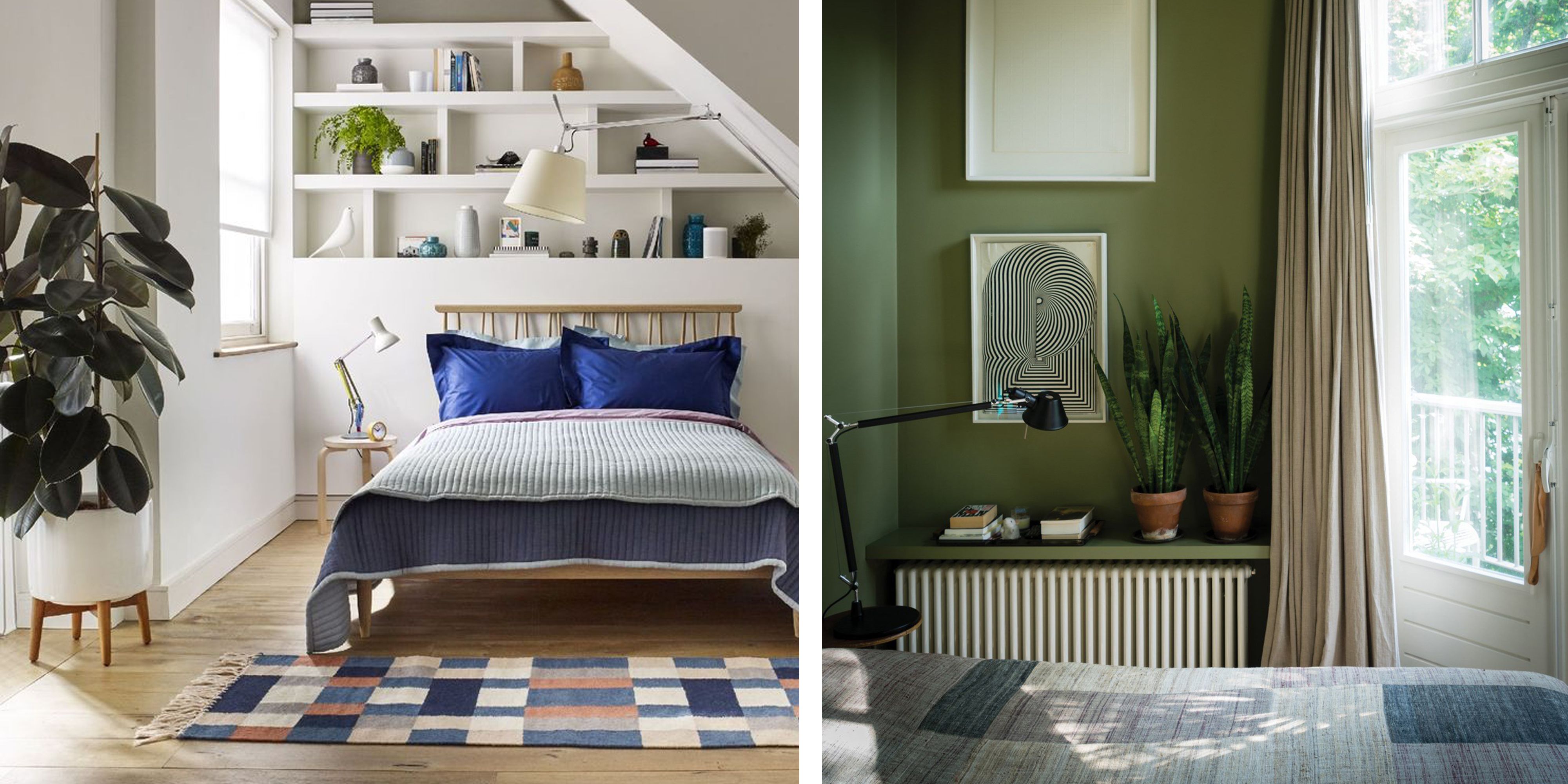Maximizing Space in a 10×10 Bedroom: Bedroom Room Design 10×10

A 10×10 bedroom, while cozy, can be a challenge when it comes to maximizing space. Don’t despair! With smart planning and a few clever tricks, you can transform this small space into a functional and stylish haven.
Essential Furniture Pieces
A functional 10×10 bedroom requires careful consideration of essential furniture pieces. This section will provide a list of furniture pieces that are essential for a functional 10×10 bedroom.
- Bed: The bed is the focal point of any bedroom, and choosing the right size is crucial. A full-size bed is ideal for a 10×10 bedroom, providing ample sleeping space without overwhelming the room.
- Nightstand: A nightstand is essential for keeping essentials like a lamp, books, and a phone within reach. Opt for a smaller nightstand with drawers or shelves for maximizing storage.
- Dresser: A dresser is vital for storing clothes and accessories. Consider a slim dresser with drawers or a chest of drawers with a mirror for a more compact option.
- Storage Ottoman: A storage ottoman can serve as a seat, a footrest, and a hidden storage space for extra blankets, pillows, or seasonal items.
Space-Saving Furniture Options
Space-saving furniture options are crucial for a 10×10 bedroom. This section will discuss space-saving furniture options for a 10×10 bedroom.
- Murphy Bed: A Murphy bed folds away into a wall cabinet, freeing up valuable floor space during the day.
- Loft Bed: A loft bed raises the sleeping area, creating space underneath for a desk, storage, or a seating area.
- Bunk Bed: If you have two people sharing the room, a bunk bed is a great space-saving option.
- Multi-Functional Furniture: Look for furniture pieces that serve multiple purposes, such as a storage bed with built-in drawers or a desk with a fold-down table.
Designing a Layout for a 10×10 Bedroom, Bedroom room design 10×10
A well-designed layout is essential for maximizing functionality and storage in a 10×10 bedroom. This section will provide a layout design for a 10×10 bedroom that maximizes functionality and storage.
The layout should prioritize the placement of the bed, ensuring it doesn’t block any doorways or windows.
- Place the bed against a wall: This creates a sense of spaciousness and allows for more floor space.
- Use the corner for storage: A corner shelf or a tall storage cabinet can be placed in the corner to maximize storage without taking up valuable floor space.
- Utilize the wall space: Mirrors can create an illusion of more space, while wall-mounted shelves and organizers can keep belongings off the floor.
- Consider a small desk or vanity: If you need a workspace, a small desk can be placed against a wall or tucked into a corner.
Creating a Sense of Spaciousness
Creating a sense of spaciousness is crucial in a 10×10 bedroom. This section will provide tips for creating a sense of spaciousness in a 10×10 bedroom.
- Use a light color palette: Light colors, such as white, cream, and pale blues, can make a room feel larger and more airy.
- Minimize clutter: Clutter can make a small room feel cramped. Keep surfaces clear and organize belongings in storage solutions.
- Use mirrors: Mirrors can reflect light and create the illusion of more space. Place a mirror opposite a window to enhance natural light.
- Keep the floor clear: Avoid placing too much furniture on the floor. Use rugs to define different areas and add visual interest.
Styling a 10×10 Bedroom

A small bedroom doesn’t have to be a design nightmare. In fact, with the right approach, it can become a cozy haven. The key is to choose a style that complements the limited space and your personal preferences.
Design Styles for a 10×10 Bedroom
Here are some popular design styles that work well in a 10×10 bedroom:
- Minimalist: This style emphasizes simplicity, functionality, and clean lines. Minimalist bedrooms typically feature a neutral color palette, a limited number of furniture pieces, and a focus on natural light.
- Bohemian: Bohemian style embraces eclecticism, layering, and a sense of global inspiration. Think rich textures, vibrant colors, and a mix of patterns and materials.
- Modern: Modern design is characterized by sleek lines, geometric shapes, and a focus on functionality. It often features a neutral color palette with pops of color and bold accents.
- Scandinavian: Scandinavian design emphasizes simplicity, functionality, and natural materials. It typically features a light and airy color palette, with white walls and natural wood furniture.
- Coastal: Coastal style evokes a sense of relaxation and beachy vibes. It often features a light and airy color palette, natural textures, and nautical accents.
Key Elements of Each Style
Here’s a breakdown of the key elements of each style:
- Minimalist:
- Color Palette: Neutral colors like white, gray, black, beige, and cream.
- Materials: Natural materials like wood, leather, and metal.
- Furniture: Simple and functional furniture pieces with clean lines.
- Decor: Minimalist artwork, sculptures, and plants.
- Bohemian:
- Color Palette: Rich, earthy tones, vibrant jewel tones, and metallic accents.
- Materials: Natural fibers like cotton, linen, wool, and silk.
- Furniture: A mix of vintage and modern pieces, with unique textures and shapes.
- Decor: Tapestries, rugs, throws, pillows, and plants.
- Modern:
- Color Palette: Neutral colors with pops of bright colors, like red, yellow, or blue.
- Materials: Sleek materials like glass, metal, and acrylic.
- Furniture: Geometric shapes, clean lines, and minimal embellishments.
- Decor: Modern artwork, sculptures, and lighting fixtures.
- Scandinavian:
- Color Palette: Light and airy colors, like white, gray, beige, and pale blue.
- Materials: Natural materials like wood, wool, and linen.
- Furniture: Simple and functional furniture pieces with clean lines.
- Decor: Minimalist artwork, plants, and natural elements.
- Coastal:
- Color Palette: Light and airy colors, like blue, green, white, and cream.
- Materials: Natural materials like wood, rope, and cotton.
- Furniture: Light and airy furniture pieces with a relaxed vibe.
- Decor: Nautical accents, seashells, driftwood, and plants.
Color Palettes and Materials
- Minimalist: A neutral color palette with pops of color can add visual interest. White walls, gray furniture, and black accents create a clean and sophisticated look. Natural materials like wood and leather add warmth and texture.
- Bohemian: Embrace rich, earthy tones like brown, green, and orange. Add pops of vibrant color with jewel tones like emerald green, sapphire blue, and ruby red. Metallic accents like gold and silver can add a touch of glamour. Natural fibers like cotton, linen, wool, and silk create a cozy and inviting atmosphere.
- Modern: A neutral color palette with pops of bright colors creates a modern and stylish look. Black, white, and gray are popular choices, while pops of color like red, yellow, or blue add visual interest. Sleek materials like glass, metal, and acrylic create a modern and sophisticated look.
- Scandinavian: Light and airy colors create a sense of spaciousness. White walls, pale blue accents, and natural wood furniture create a clean and inviting look. Natural materials like wood, wool, and linen add warmth and texture.
- Coastal: Light and airy colors like blue, green, white, and cream evoke a sense of relaxation. Natural textures like wood, rope, and cotton add a touch of beachy charm. Nautical accents like seashells, driftwood, and rope add a coastal touch.
Mood Board for a Minimalist 10×10 Bedroom
Imagine a bedroom with:
- White walls with a subtle gray undertone.
- A white platform bed with a gray headboard.
- A gray linen duvet cover with white throw pillows.
- A white bedside table with a simple black lamp.
- A white rug with a subtle gray pattern.
- A black framed print of a minimalist landscape above the bed.
- A potted succulent plant on the bedside table.
- A large window with white blinds.
